The 3rd variant in my LXR2 series, and the longest in length. It's the Roberts LXR2-400.
History
Oct 2022
I first came up with the idea of an airliner in Oct 2022, while planespotting from a hotel room balcony in Queenstown. It was a top view that was very basic, but would be the beginning of a long journey.
Development
LXR1 similarities
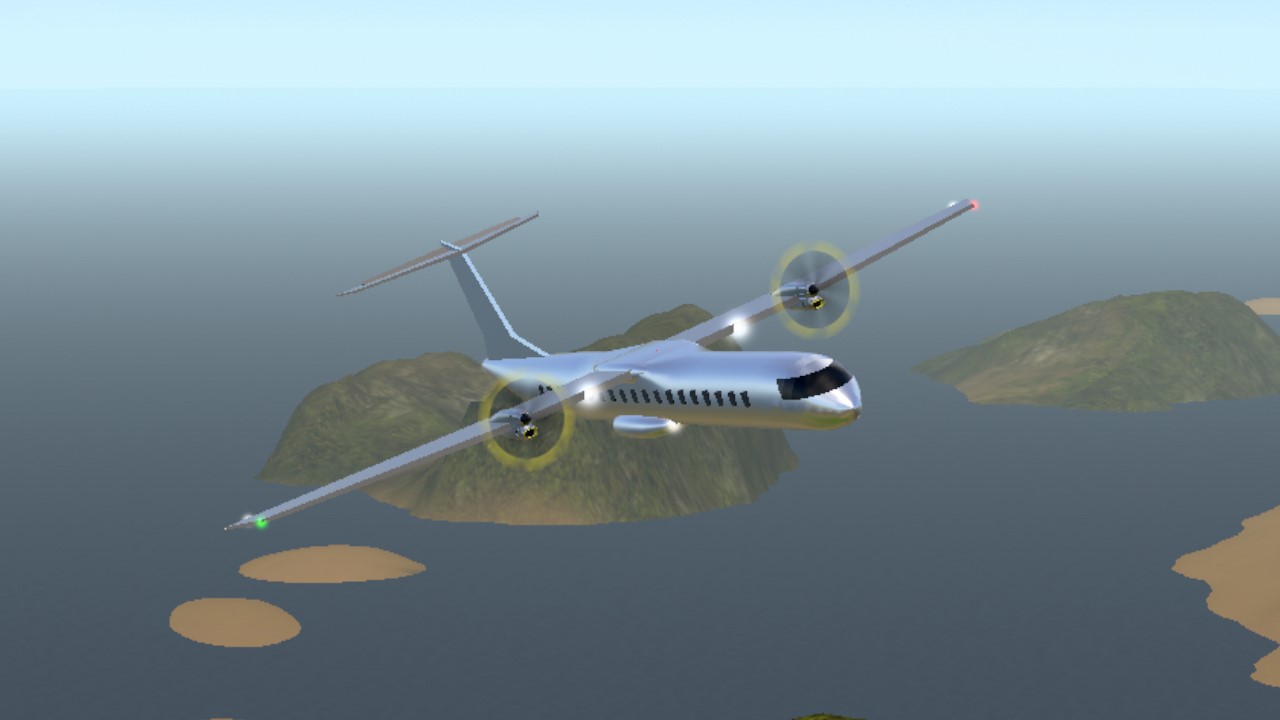
Before I started designing the prototype, I had already made the LXR1 turboprop, which was the result of someone (who shall remain nameless) saying that basically, I make planes that are somewhat mediocre. And they were right (sort of), so I stepped up my game with the LXR1. For my LXR2 jetliner, I decided that the nose design would be based on the LXR1.
July 2023
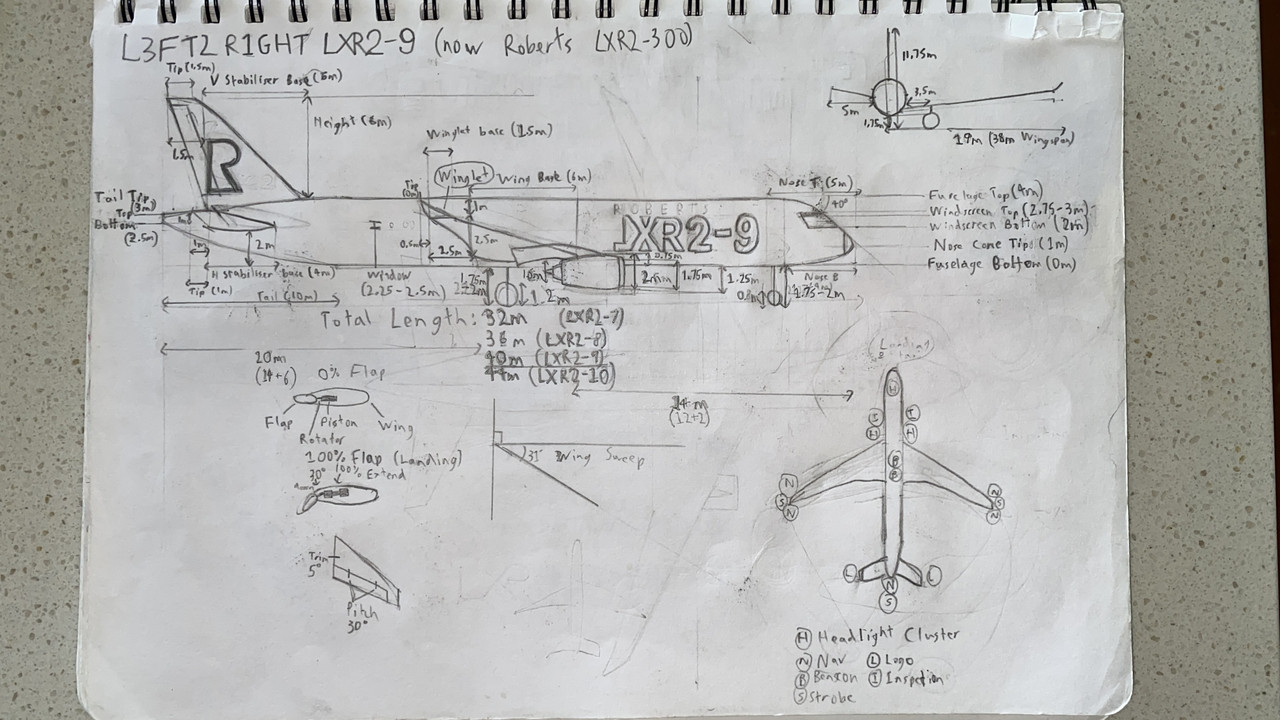
This is when I drew up my original blueprint(s) for the LXR2-9 (later the LXR2-300) (replacing the original top view), and it was my most detailed drawing I’d ever done. I would commence the actual building of the plane shortly after, on a flight from Wellington to Brisbane.
VR decision
When I started this project, I had no intention of adding a VR cockpit. I had thought about it, but didn’t actually make one until later, Once I started, I didn’t stop.
Prototype in Nov 2023
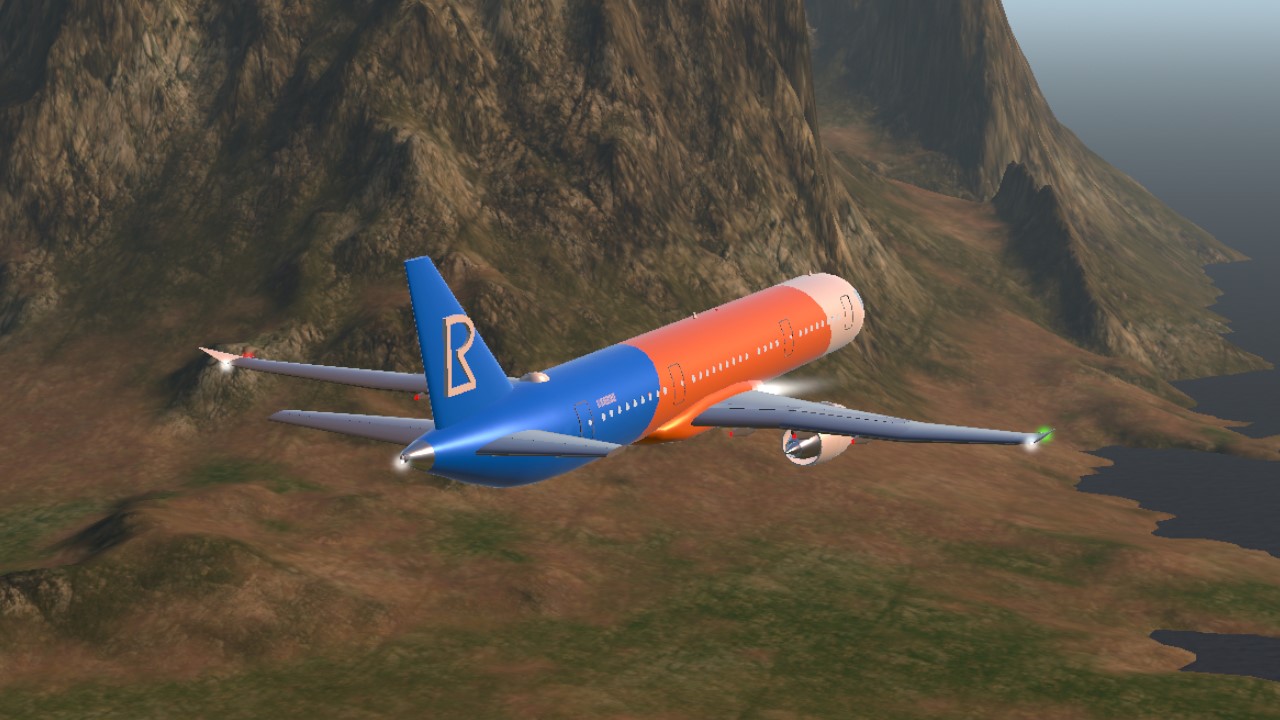
I unveiled the LXR2-300 prototype in November 2023, with links to the other unlisted variants. The first stage was complete: Hit the ground running with a fully functioning prototype. But the second stage was already well-underway: Continue development for the production model.
Design
The design has been inspired by both the latest jetliners and my LXR1 turboprop, with the semi-blended wingtips, high bypass engine design, and the single-slope nose.
Changes from prototype
At first glance, the prototype and production LXR2-400 aircraft look rather similar (The LXR2-10, later LXR2-400, as it was called originally, was the main version through development, so that cutting parts out of the fuselage would be easier) . Look closely, however, there are a multitude of changes:
- Updated Landing Gear
- Redesigned wings
- Redesigned flap mechanism
- Opening doors
- Redesigned Cockpit (see Cockpit section for more info)
- AoA sensor (don't worry, this one works properly)
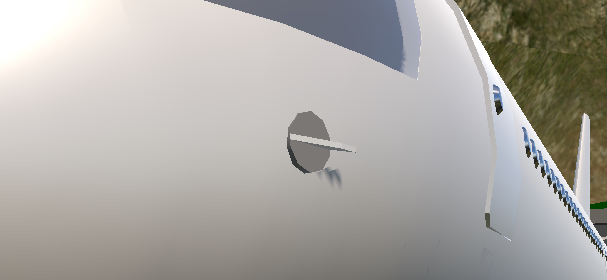
Comparisions
Front
Prototype:
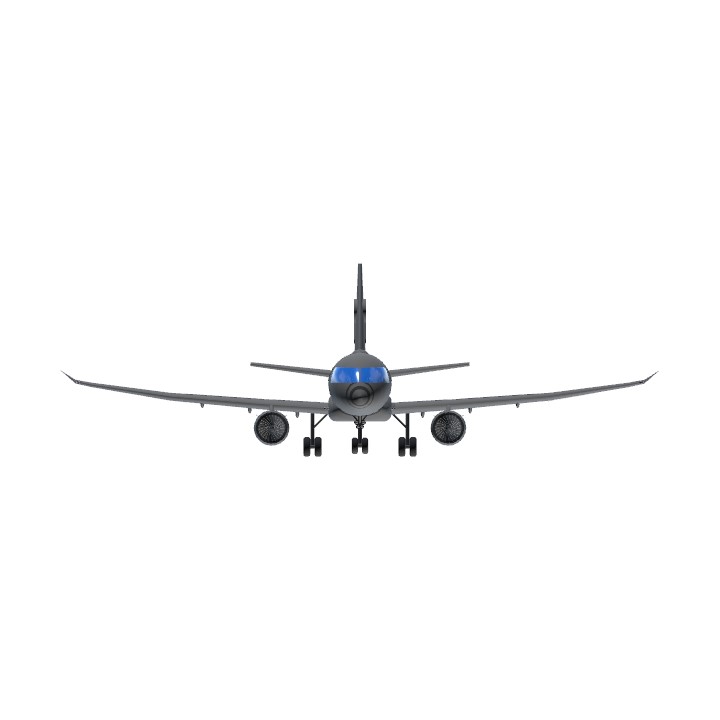
Production:
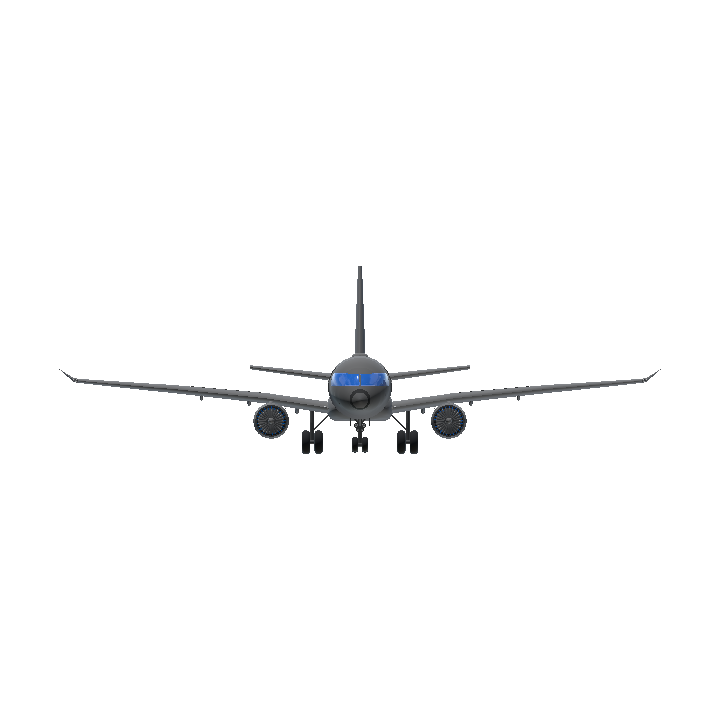
Side
Prototype:
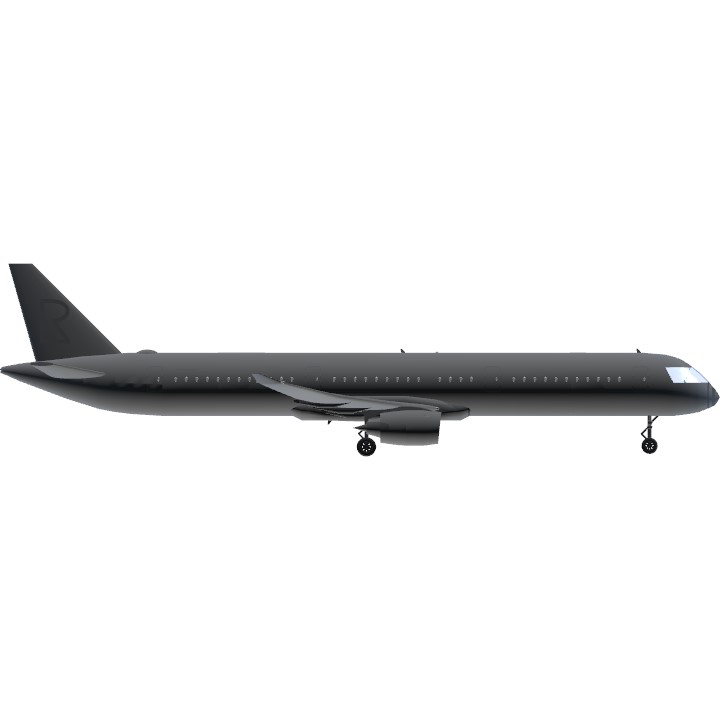
Production:
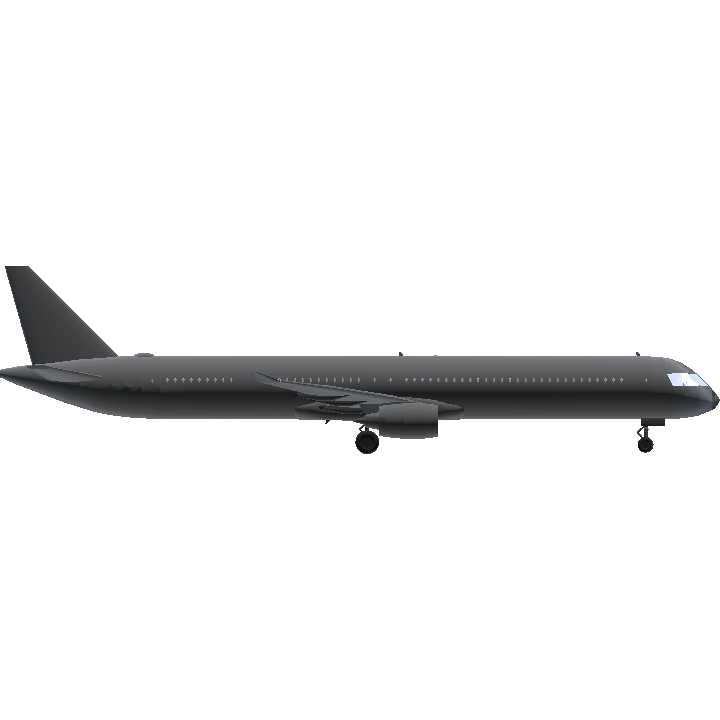
Variants
LXR2-100
The smallest model of the LXR2 series, similar in size as the Airbus A319neo and Boeing 737 MAX 7.
LXR2-200
The main model, similar in size as the A320neo, 737 MAX 8, Comac C919-100, and Yakovlev MC-21-200.
LXR2-400
The largest model of the LXR2 series, similar in size as the A321neo, 737 MAX 9, 737 MAX 10, and MC-21-300.
The links can be found here.
Cockpit
Prototype Cockpit:

Production Cockpit:
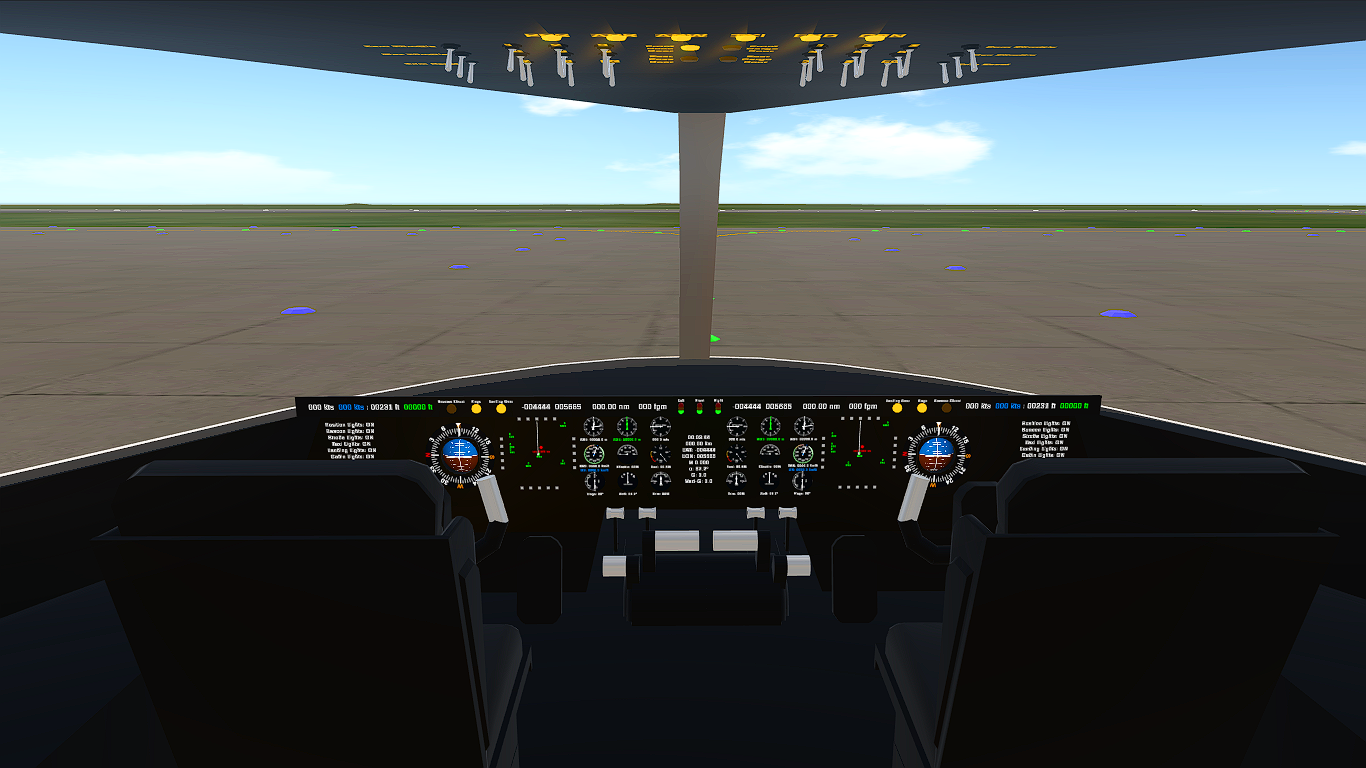
The cockpit is likely the largest change from prototype to production. The fully digital display has been replaced with a neat layout consisting of both analogue and digital readings. The compass and artificial horizon have been combined into one. There's now somewhere to put your legs. The joysticks have been replaced with control columns. The throttle control has been redone. The VR grips and switches have been brought closer towards the cameras for easier reach (including a lower cockpit ceiling), and are white with a slight emission for better visibility at night.
Gauges and measurements
The analogue gauges measure in the de facto measurements in aviation (feet, knots, etc), while the digital readouts below each gauge and in the centre are either metric or percentages, and are mainly de facto aviation measurements everywhere else (the digital fpm readout is to the nearest 100 fpm).
Controls
Trim, Throttle, Brake, Roll, Pitch, and Yaw are all normal.
Flaps: VTOL down (Flaps 15 degrees when VTOL is between -45 and -55%)
Engines: Group 8
Reverse Thrust: Brake and GS less than 54 kts (100 km/h) (only works on ground, but Group 5 for override)
Spoilers: Group 1 and when aircraft is on ground. Or Group 1 and Brake when in the air.
Pushback: Group 6 and Group 8
Passenger Doors: Group 7, and GS<1 m/s.
Cargo Doors: Group 7, and GS<1 m/s. VTOL 0% for both doors closed, VTOL 1 to 50% for front cargo door, VTOL 51 to 99% for both doors open, VTOL 100% for rear cargo door.
Ground Steering: Yaw (only works on ground, but Group 5 for override)
Lights
Position Lights: Always On
Anti-Collision Lights
- Red: Group 8, use from pushback to engine shutdown.
- White: Group 3
Taxi Lights*: Group 2
Landing Lights*: Group 3
Cabin Lights: Group 4
*Will automatically deactivate over 18,000 ft (5,486.4 m)
Instructions are included in-game.
Screenshots (Credit to JoovBr)


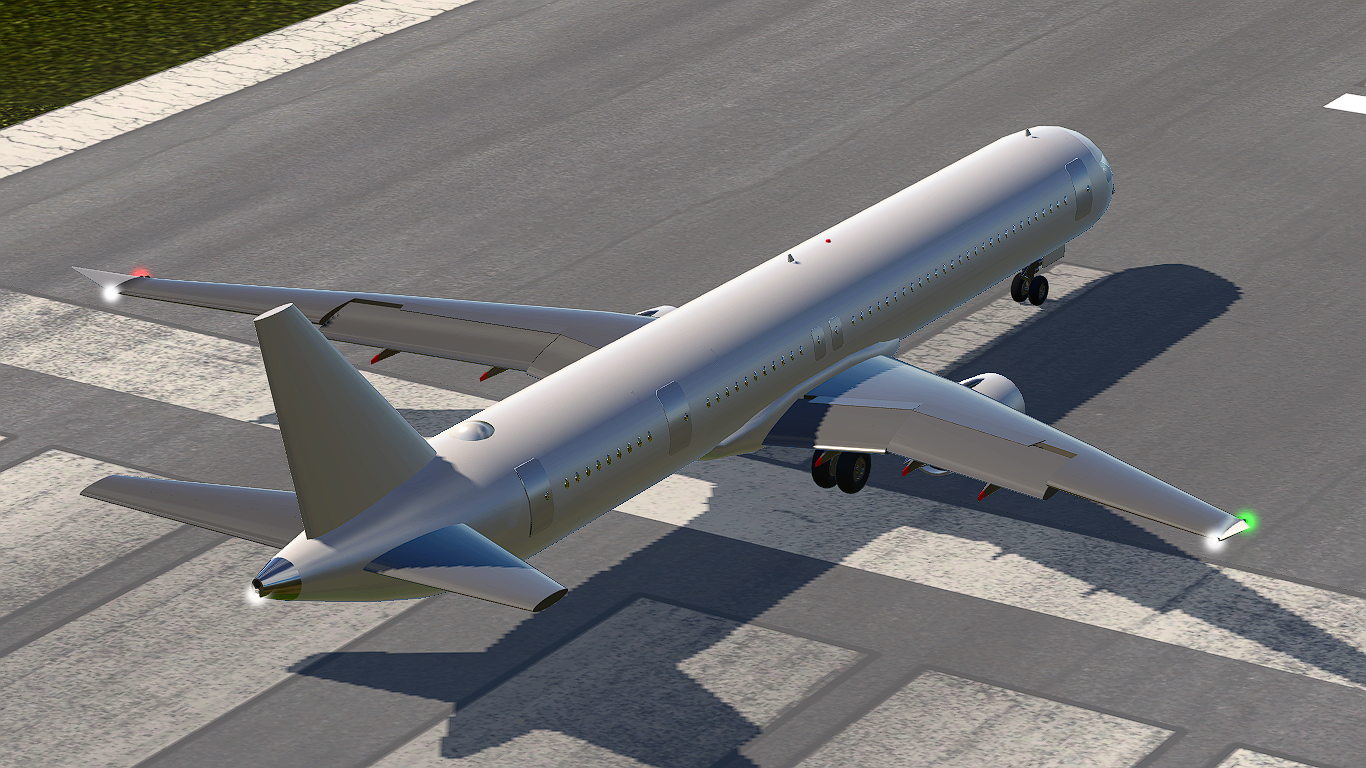

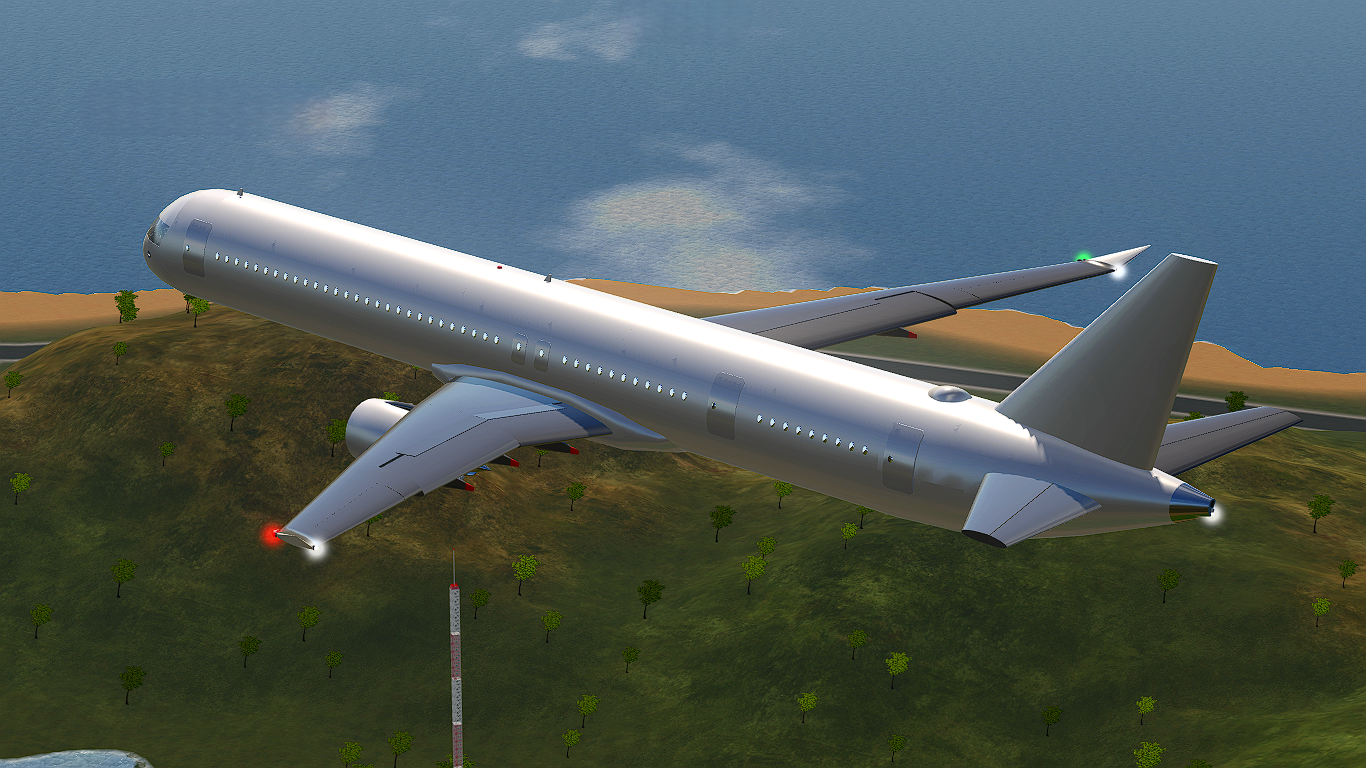
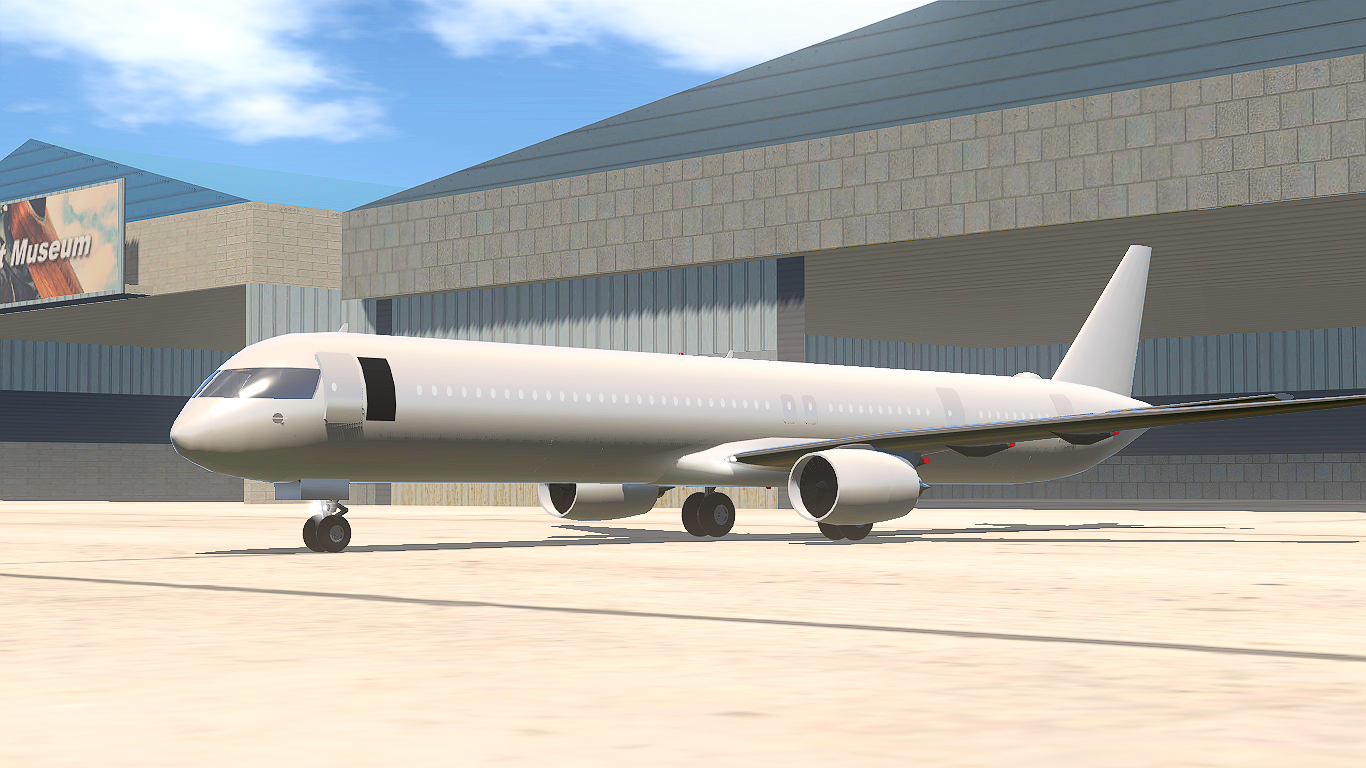
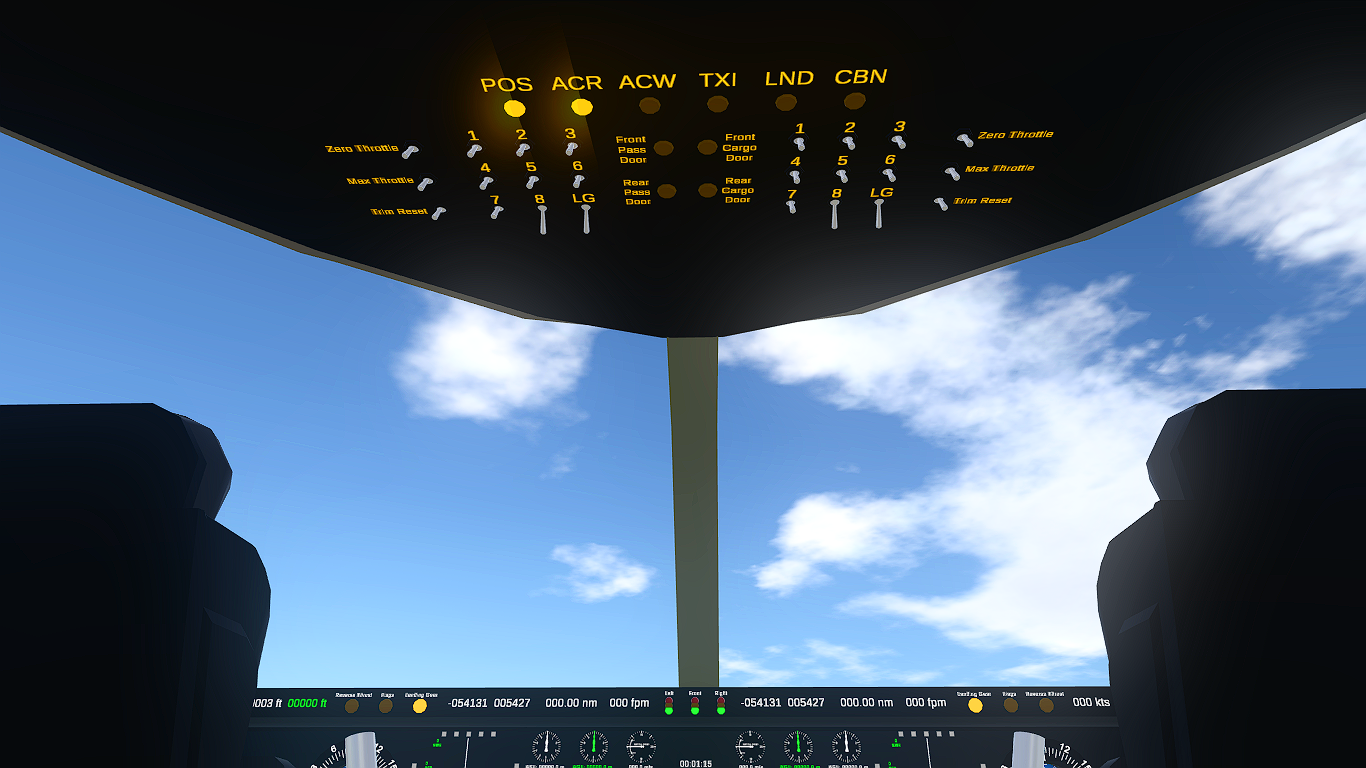
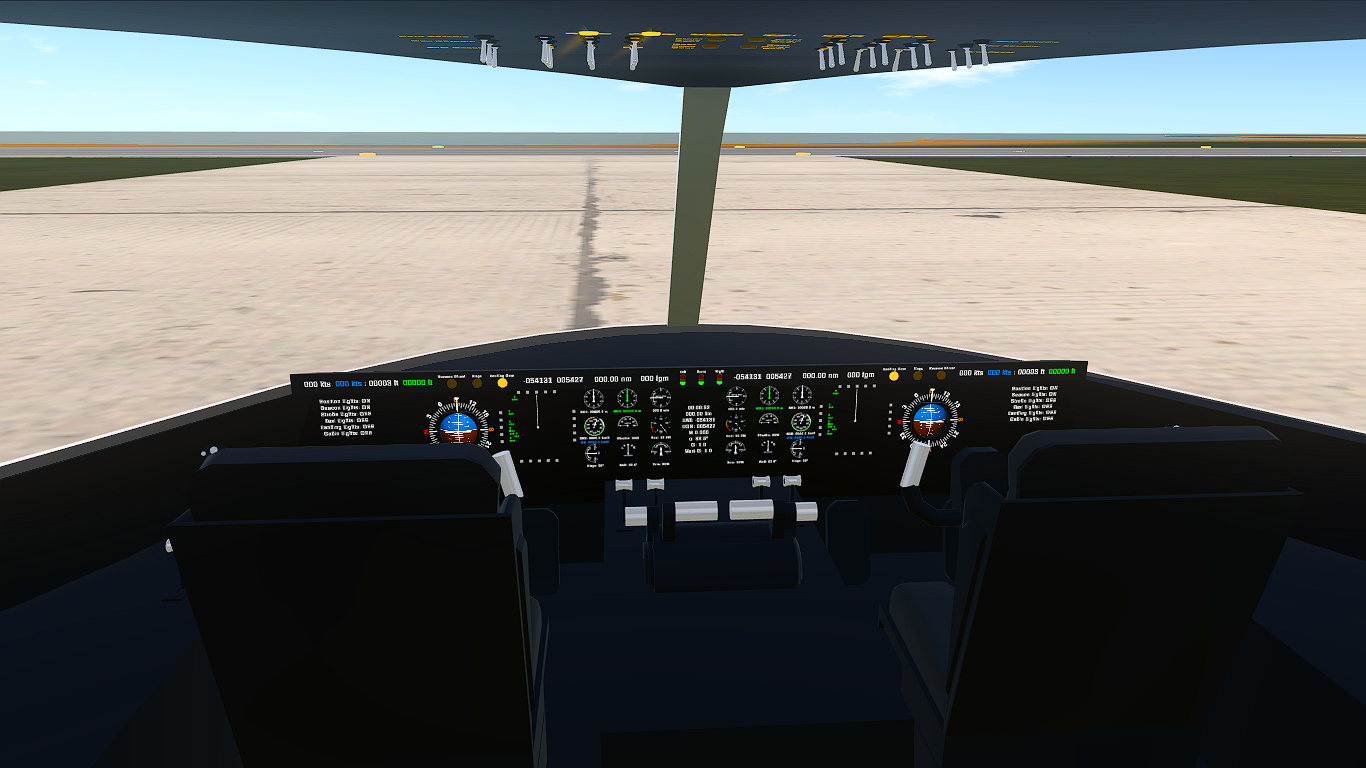
Credits
GalacticaAsia
Much of this aircraft wouldn't be the same without their airliners.
RealSavageMan
This video on precise rotation was very useful — I now use small rotators for basically anything that rotates.
GuyFolk
I decided that the map from GuyFolk's [AI] auto ejecting Wasp-B would be very useful in terms of navigation and travelling to locations beyond the map boundary.
Performance
V1: 130 kts (240 km/h)
Vr: 151 kts (280 km/h)
V2: 162 kts (300 km/h)
V3: 216 kts (400 km/h)
Typical Cruise Alt: c. 36,000 ft (10972.8 m)
Typical Cruise Speed: Mach 0.85-0.86 (c. 500 kts (926 km/h)) @ 36,000 ft (10972.8 m))
Recommended Landing Speed: 130-146 kts (240-270 km/h)
Happy Flying!
_th May 2024
Specifications
Spotlights
- This craft is curated
- DARZAVIATION 10 months ago
- TheMouse 10 months ago
General Characteristics
- Predecessor Roberts LXR2-400
- Successors 8 airplane(s) +231 bonus
- Created On Mac
- Wingspan 124.4ft (37.9m)
- Length 148.3ft (45.2m)
- Height 38.7ft (11.8m)
- Empty Weight N/A
- Loaded Weight 59,793lbs (27,122kg)
Performance
- Power/Weight Ratio 1.747
- Horse Power/Weight Ratio 0.05
- Wing Loading 28.7lbs/ft2 (140.0kg/m2)
- Wing Area 2,085.5ft2 (193.8m2)
- Drag Points 6214
Parts
- Number of Parts 721
- Control Surfaces 7
- Performance Cost 4,317

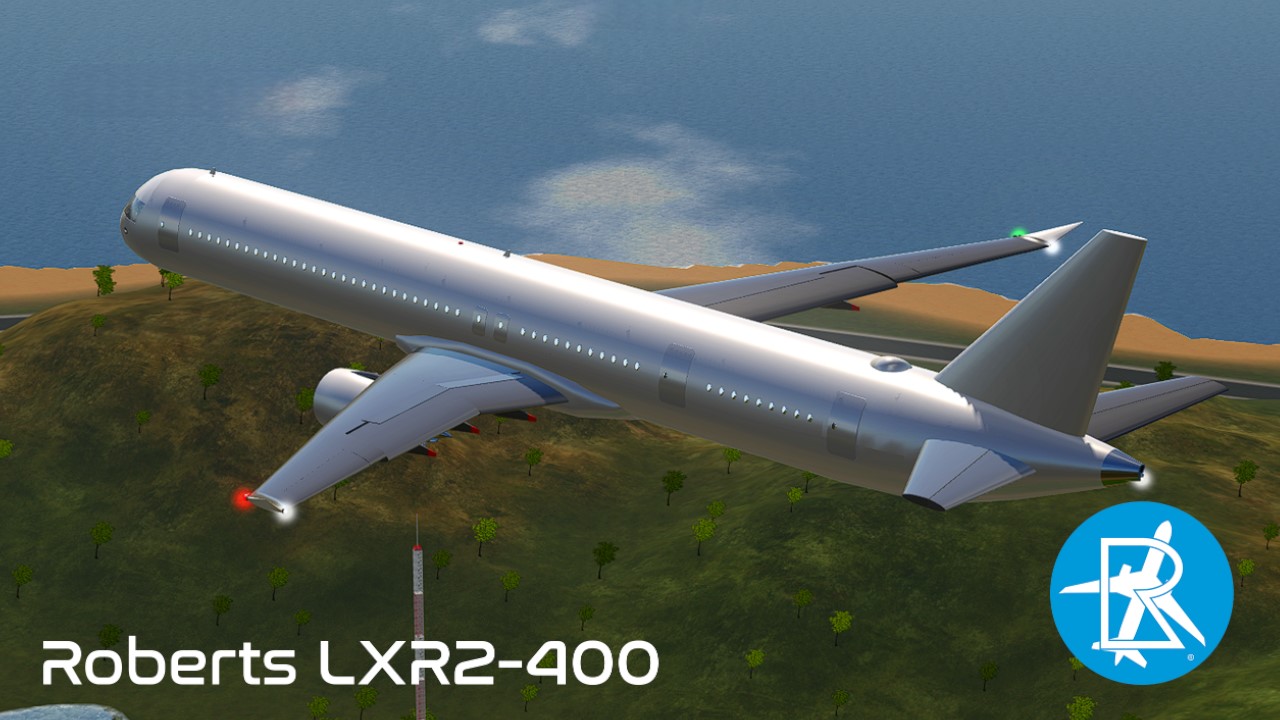
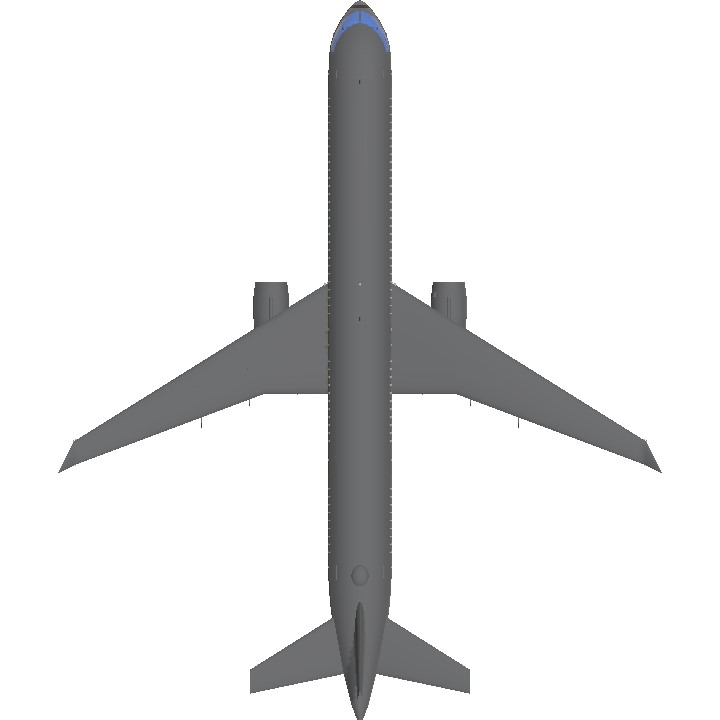
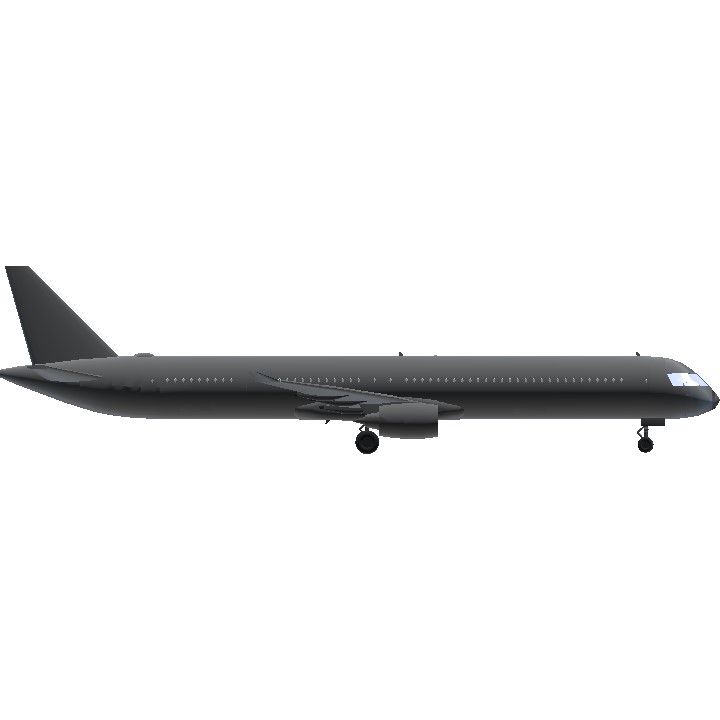
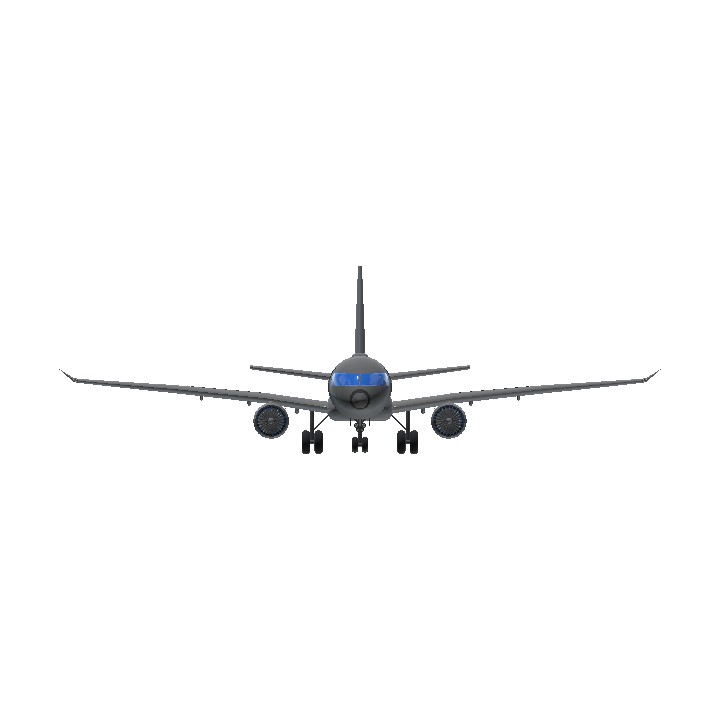
@SLSD11ph auto-tag
I really do like the drawing I do something similar for designing now days but never really that detailed
@L3FT2R1GHT mk
Tags:
@BadahhMuscleCar001
@PlaneSpike
Screenshots:
@JoovBr
Tags:
@theNoobCountry2
@TheMouse
@DARZAVIATION
Tags:
@LoganTheGameDev
@CaptainBrayden I've published it now
@MAPA
@L3FT2R1GHT k
@CaptainBrayden The description still needs editing.